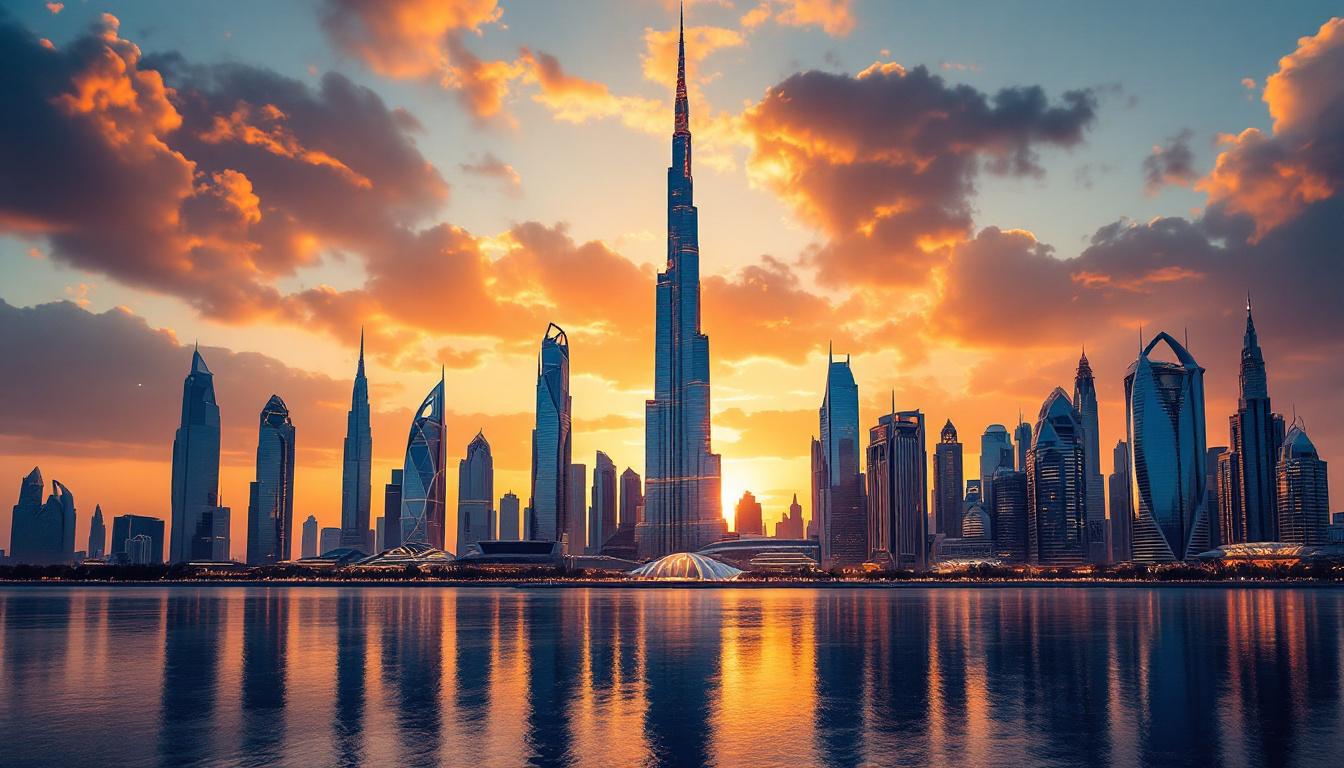Dubai defies imagination. Rising from the desert like a mirage made solid, this emirate transforms fantasy into reality through sheer ambition and architectural audacity. The futuristic skyline, dominated by the needle-like Burj Khalifa, creates a cityscape that feels plucked from science fiction rather than the Arabian Peninsula.
The world’s most dramatic urban transformation
Just 50 years ago, Dubai was little more than a fishing village. Today, it stands as a testament to human ingenuity and vision. The Burj Khalifa, piercing the sky at 2,717 feet, remains the tallest structure ever built. Its observation decks offer views that extend 60 miles on clear days, revealing the stark contrast between ultramodern metropolis and ancient desert.
Beyond the glittering façade
While Dubai’s gleaming skyscrapers command attention, the emirate’s soul resides in its historic districts. In Al Fahidi, narrow sikkas (alleyways) wind between sand-colored buildings topped with wind towers—ingenious natural air conditioning systems developed centuries ago. Here, the Dubai Creek pulses with wooden abras (water taxis) crossing between souks that assault the senses with gold, spices, and textiles.
“Dubai represents the perfect marriage between our cherished traditions and our ambitious vision for the future,” explains Mohammed Al Mulla, a local cultural guide. “We honor our pearl-diving past while reaching for the stars.”
The architectural playground where imagination runs wild
Dubai’s skyline reads like an architect’s fever dream. Beyond the Burj Khalifa, the sail-shaped Burj Al Arab stands on its artificial island. Palm Jumeirah—visible from space—extends into the Persian Gulf in the shape of a palm tree. The Museum of the Future, a hollowed oval covered in Arabic calligraphy, represents Dubai’s newest iconic structure.
Desert adventures beyond the city limits
Just 30 minutes from downtown, the Arabian Desert offers thrilling escapades. Dune bashing in 4x4s, sandboarding down golden slopes, and camel treks to Bedouin camps provide stark contrast to the city’s opulence. At sunset, the desert transforms into a photographer’s paradise as the sands glow amber against deepening blue skies.
For those seeking more remote adventures, consider Vietnam’s breathtaking hidden bays where limestone formations create equally dramatic landscapes.
A culinary melting pot reflecting global influences
Dubai’s food scene mirrors its international population. From street-side shawarma stands to Michelin-starred restaurants atop skyscrapers, the emirate caters to every palate and budget. Al Dhiyafah Road offers authentic Middle Eastern cuisine, while Dubai Marina features waterfront dining with fusion flavors reflecting the city’s cosmopolitan character.
“In my 30 years as a chef here, I’ve watched Dubai become one of the world’s great food destinations,” notes Chef Khalid bin Hadher. “We now showcase everything from traditional Emirati cuisine to experimental gastronomy.”
Cultural experiences hidden in plain sight
The Sheikh Mohammed Centre for Cultural Understanding offers authentic Emirati experiences, including traditional meals with local hosts who encourage questions about culture and customs. For art enthusiasts, Alserkal Avenue’s warehouses house contemporary galleries, while the annual Art Dubai festival attracts international creators.
This blend of cultural preservation alongside innovation mirrors what visitors discover in Spain’s medieval cities where different traditions created remarkable fusions.
When to experience Dubai at its best
November through March offers pleasant temperatures (75-85°F/24-29°C) ideal for outdoor exploration. Avoid July and August when temperatures regularly exceed 105°F (41°C). The annual Dubai Shopping Festival (December-January) brings additional entertainment and deals, while Ramadan offers unique cultural insights but modified business hours.
Like Morocco’s blue mountain villages, Dubai balances tourism demands with cultural preservation through thoughtful visitor management.
The unexpected natural oases
Amid Dubai’s concrete and glass, surprising green spaces flourish. The Miracle Garden (open October-May) displays 50 million flowers in artistic arrangements. Ras Al Khor Wildlife Sanctuary protects salt flats where pink flamingos wade against the backdrop of skyscrapers—a surreal juxtaposition of nature and architecture found nowhere else on earth.
This harmonious blend of natural wonders with human achievement recalls Peru’s ancient lake with floating reed islands where traditional craftsmanship creates extraordinary environments.
Dubai’s transformative impact
Dubai doesn’t merely impress—it transforms perspectives. Standing atop the Burj Khalifa at sunset, watching the city lights flicker to life below while the call to prayer echoes across the skyline, visitors experience the harmonious coexistence of past and future. Like Japan’s sacred mountains, Dubai offers both visual splendor and profound insights into human potential and ambition.
